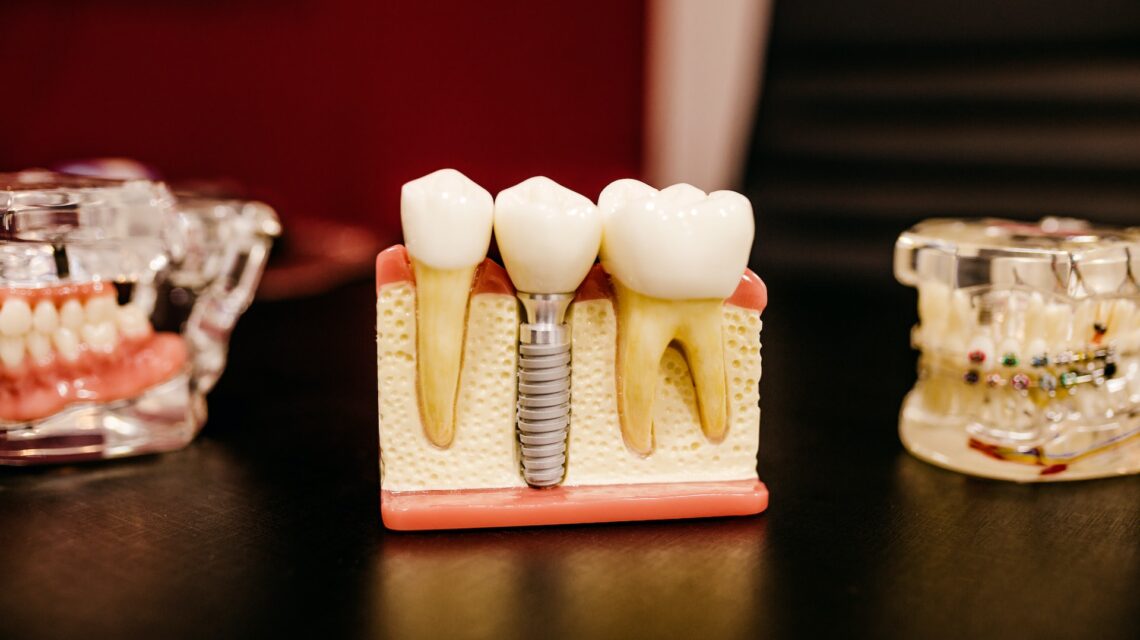Missing teeth can compel your bite to become out of balance, changing the way your face is shaped. They might also cause you to doubt your grin.
Your dentist might advise artificial teeth that are connected in or close to the jawbone with an implant if you decide to replace lost teeth.
Dental implants in Troy are prosthetic tooth roots that are inserted into the jawbone surgically. The implant is held firmly in place over the course of several months by the bone surrounding it, which develops. The gap is then filled in with prosthetic teeth that are connected to the implant using a metal connector.
Surgery Process And Recovery
The process of getting an implant involves several steps and takes between three and nine months. Before your treatment is finished, you could require the assistance of multiple other dental specialists, such as an oral surgeon and a periodontist.
Evaluation
Get your teeth, gums, and jawbone examined as the initial step. The determination of whether you have sufficient healthy jawbone to support the implant is a crucial component of this initial evaluation.
Before starting the dental implant process, a bone graft or other operation may be advised if your jawbone is too thin or soft. Furthermore, there must be no periodontal disease in your gums.
A single or multiple teeth can be replaced by implants. The kind and extent of the surgery you can anticipate will depend on how many teeth you want to have replaced.
Surgery for dental implants in Troy is typically performed as an outpatient. Local anesthetic, IV sedation, or general anesthesia are all options for performing it. The type of anesthesia you will require will be disclosed to you in advance by your specialist.
Placing the implant
If you have an endosteal implant:
- The gum will be sliced by an oral surgeon, revealing the bones beneath.
- The implant post will be put into deep holes that will be bored into the bone.
- If you choose, you can cover the gap with a temporary, removable denture for aesthetic reasons until the permanent tooth can be fixed to the implant.
If you have a subperiosteal implant, the implant post will be positioned on or above the bone rather than drilling a hole in your jawbone.
No matter what kind of implant you get, you can anticipate some swelling and discomfort afterward. This could last for a few days. The majority of people discover that they can get back to their normal routines the day after a dental implant has been inserted.
Osseointegration
It may take about two to six months after the dental implant has been inserted for sufficient new bone to form around the screw. Osseointegration, which literally translates as “combining with the bone,” is the name of this process.
During osseointegration, the normal jaw bone will strengthen and enlarge around the dental implant. This keeps it in place and enables it to act as the artificial tooth’s root.
Abutment placement
The implant is frequently supplemented with a metal extender known as an abutment. This could happen either during the initial procedure or a little subsequent procedure performed under local anesthesia.
The new tooth is joined to the implant using abutments.
If gum tissue has developed over the implant during the second treatment, the surgeon might have to make an incision. This is because of the fact that, following implant placement, a healing cap is put on top of the implant. This serves to safeguard the implant while typically preventing tissue from covering it.
The healing cap will be taken off during the second surgery, and the dental implant will then be screwed with the abutment. After that, the gum tissue will shape itself around the abutment.
After the abutment is placed, the gums will need time to heal.
Placing the tooth
Your dental implants dentist will take an impression of your teeth when the healing process is finished so that the permanent replacement tooth or teeth may be crafted to fit. Both of these options are available.
If you select a removable tooth, it will be fixed to an abutment using a metal frame. For daily cleaning, this sort of tooth can be extracted at home. If you select a fixed tooth, it will be screwed or glued onto the abutment permanently.
Your replacement teeth will feel and look completely normal. They require daily brushing and flossing for maintenance. To clean them, no specialized tools are required. They can be cared for in the same manner as your actual teeth.
Don’t forget to schedule routine dental checkups as well.
Conclusion
The mouth can be fitted with crowns or artificial teeth using dental implant services. They are often drilled into the jawbone, acting as the root of the prosthetic tooth.
The placement of dental implants requires several months. They are made to last for many decades and have a natural appearance. You can consider a dental implant as the best solution if you have broken, chipped, crooked, or missing teeth.
Let’s chat!
Are you looking for an experienced dental implant dentist? Leske Dental is located in Troy, MI, and provides the best Dental Implants services to the Troy, MI community. To book an appointment call us at 248-720-6455 today!




